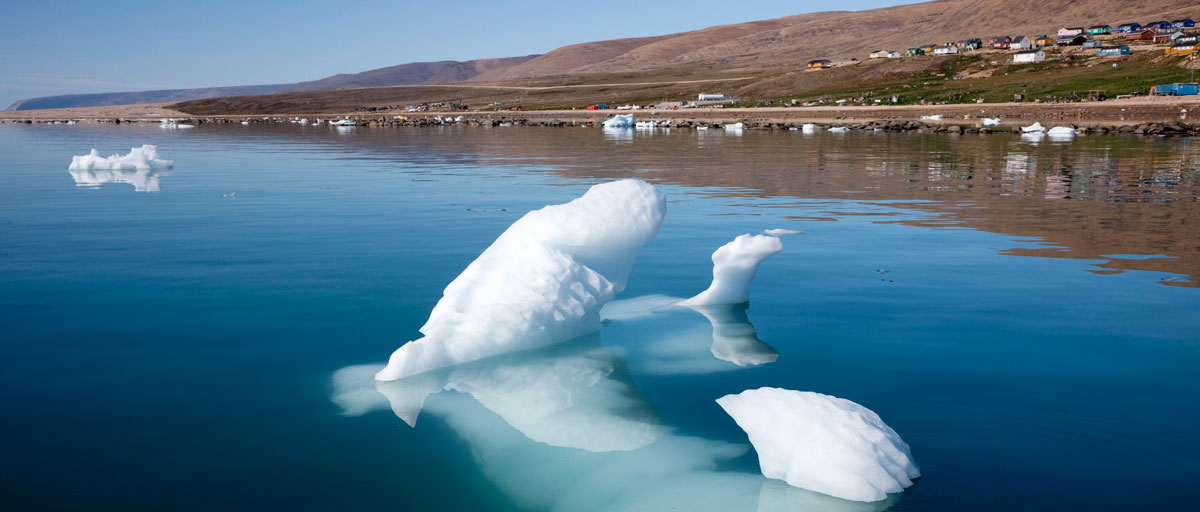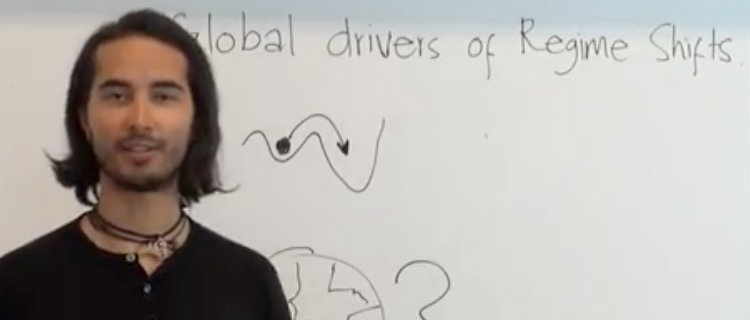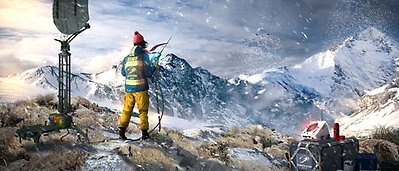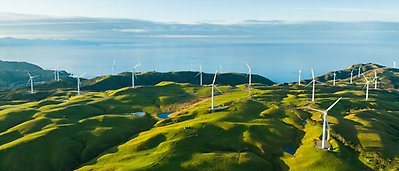
Abrupt changes in ecosystems would be potentially catastrophic for human living conditions, argues a new article looking at regime shifts and their relations to planetary boundaries. Photo: A. Maslennikov/Azote
Regime shifts
Avoid tipping over
Human activity could give rise to planetary-scale ecological regime shifts
- Planetary-scale regime shifts are possible, but the question is what will happen tipping points in societies, climate systems and ecosystems combine
- Large-scale connectivity has its downfalls and could contribute to planetary-changes
- Planetary boundaries framework could guide future policy and management, though uncertainties around planetary regime shifts still need to be addressed
Some sixty-five million years ago the dinosaurs died out along with some 50 percent of other life forms on the planet. This paved the way for the mammals and represented a radical and irreversible transition, which has recently been reinterpreted by paleontologists as a planetary-scale regime shift.
In the past such global mass extinctions were "quickly" reversed on a geological timescale, but today this would be catastrophic for humans who depend on the stable provision of ecosystem services. This is also the conclusion of centre director Johan Rockström and colleagues in a recent article published in the journal Trends in Ecology and Evolution.
"Life on Earth has repeatedly displayed abrupt and massive changes in the past, and there is no reason to expect that comparable planetary-scale regime shifts will not continue in the future", the authors say
Learn from the past?
It is well-known that today’s ecosystems such as lakes and coral reefs, can undergo regime shifts. These large, abrupt, persistent changes are often the result of a range of slower processes like escalating rates of harvesting, global warming, and increased nutrient pollution that undermine resilience and push the systems closer to a tipping point.
In the end, the actual shift is often triggered by an external and relatively sudden disturbance, such as a flood, heat wave, or an introduced species. Similarly, back in the time of the dinosaurs the planet experienced multiple cycles of cooling, with large sea level variability due to waxing and waning of the polar ice sheets. These instabilities in climate and habitats may have pushed ecosystems from the Cretaceous period closer to a global tipping point that was finally breached by the notorious meteor that struck Mexico's Yucatan Peninsula some 65 million years ago.
To avoid future long-term damage to planetary systems and to the societies that depend on them the concept of planetary boundaries (as distinct from identifying tipping points) was developed in 2009. They were designed for maintaining safe levels of human impact, but neither assumes, nor rules out, the existence of tipping points in the Earth system.
"The planetary boundaries concept takes a rational approach to weighing up the expected future costs of unwanted regime shifts versus the benefits of identifying safe levels of drivers that can be sustained"
Johan Rockström, co-author
For example, as atmospheric concentrations of carbon dioxide will most likely continue to rise higher over coming decades, the eventual worldwide consequences for ecosystems and humanity are poorly understood. The existence of thresholds and alternate states in many ecosystems at more local scales is not in doubt. The question is what will happen when tipping points in societies, climate systems and ecosystems combine.
"Intuitively, planetary boundaries should be set at lower level for a set of drivers whose safe levels are uncertain," the authors write.
Everything is connected – for good and bad
Changes in society, ecosystems, and climate are increasingly interconnected, and large-scale shifts in one can become a driver of another. Such escalating connections, or connectivity, is a critical issue for planetary resilience because of its potential to increase the likelihood of contagious spreading of local regime shifts to larger scales. In ecology, connectivity between habitats is often perceived as a good thing, promoting resilience and recovery, e.g. local populations receiving a recruitment or immigration subsidy from elsewhere.
However, connectivity is a two-edged sword.
"More connection among ecosystems through human action can spread disease, introduce new species, increase harvesting and access to markets, erode indigenous stewardship, distort food-webs, and eliminate spatial refuges," the authors write.
The planet’s ecosystems are connected to the climate in various ways. This means that changes in vegetation due to shifts in climate, land use, and urbanization can create feedbacks that generate threshold responses. In the Arctic, for example, rising temperatures over the past century has promoted the extension northwards of boreal forests, causing a reduction in the surface albedo, which in turn leads to further warming.
Likewise, in the Amazon Basin, changing weather patterns, lower rainfall, and more frequent fires, are leading to diminished forest cover that is exacerbated by logging. This loss of trees and vegetation is further reducing the rainfall and also leads to release of carbon dioxide that accelerates global warming.
Strong opinions
Incorporating the dynamics of tipping points and alternate states into global governance of the environment, food, and energy is a huge challenge. The concept of planetary boundaries is one of several potential frameworks that could help guide future approaches to policy and management actions, the authors argue.
However, they also conclude that "there are still many misconceptions that cloud the controversy surrounding planetary-scale tipping points". One is that many confuse the rate of change of a system, which may be fast and synchronous or slow and incremental, with the presence or absence of a tipping point. Another mistake is failure to perceive the difference between drivers (i.e., causes), feedbacks, and system responses.
"Avoiding detrimental consequences of planetary-scale regime shifts will require a clear focus on the drivers and feedbacks, not just on piecemeal efforts to control some of the biological consequences."
It is, however, also crucial to acknowledge the many uncertainties and the need for more research. One of the areas of high uncertainty is how human-altered ecosystems are changing the climate, and vice versa, increasing the likelihood of regime shifts that could cascade and eventually spread globally.
"The strong opinions expressed on either side of the debate on planetary tipping points are sometimes based on assertions or unproven assumptions, and there are many knowledge gaps in our understanding of large-scale transformations," the authors conclude.
To bridge these gaps ecologists must quit focusing too narrowly on fast changes that are easy to observe and measure in the time frame of a thesis project or a research grant. Even a 40-year career might be too short considering that many regional- and planetary-scale processes progress so slowly. The response by terrestrial ecosystems to global warming at the end of the last ice age is one example. It took millennia to unfold, long after the ice sheets had melted.
CITATION
Hughes, T.P., Carpenter, S., Rockström, S., Scheffer, M., Walker, B. 2013. Multiscale regime shifts and planetary boundaries, Trends in Ecology & Evolution, Volume 28, Issue 7, July 2013, Pages 389-395, ISSN 0169-5347, http://dx.doi.org/10.1016/j.tree.2013.05.019.








